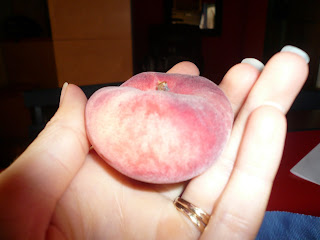I highly, highly recommend you try this one - very easy to make, delicious, and economical. On first glance at the ingredients list it might sound unhealthy - but consider that it makes about 6 servings so really, you're not overdoing it.
Here's what you'll need:

1. 1 package Pasta - a thin noodle like spaghetti, you could probably use linguine too if it's thin. I wouldn't go as thin as angel hair though. As always, you want to try and get something with a nice matte finish to it.
2. 4 ounces smoked Pancetta, sliced about 1/4" thick - this is a very important ingredient, you can probably find pancetta (Italian bacon) at an Italian grocery, or Whole Foods carries it too. If you can't find smoked, you can use regular. And if you can't even find pancetta, you can use Niman Ranch applewood smoked bacon from Trader Joe's.
3. 4 eggs - you'll only use 1 entirely, and the other 3 just the yolks. For an interesting variation which I actually prefer, use 1 whole chicken egg and 4 quail egg yolks.
4. A slice of lemon - ordinary lemon.
5. Cheese: Parmigiano Reggiano and Pecorino Romano - another important set of ingredients so you should get some decent stuff. Trader Joe's usually has both. You'll need enough to make 1 grated cup of each. I only pictured the Parm, but the Romano has a very distinctive and different taste so I definitely recommend using both.
6. Extra virgin olive oil (4 tablespoons), kosher salt (to taste) and fresh ground pepper (2 teaspoons) - the magic trio, I think these are in every single thing I make and probably in 95% of Italian dishes in general. Start with plenty of peppercorns, 2 tsp doesn't sound like a lot but you'll see when grinding that it is.
OK let's get started!
Step 1:

Fill your pasta pot with water, add salt, and put it on high heat.
Step 2:

Time to prepare the eggs. Crack one of them and put both yolk and white in a small container like a cup. With your other eggs, you just want the yolks, which you should put in the same container as the first, entire egg. An easy way to separate eggs is to crack and put them into your hand. Let the white run through your fingers (do it over a bowl if you want to save the whites), and maybe pass the yolk from hand to hand. Soon it'll be white-free.

Step 3:

Now you want to chop the pancetta, into little squares or rectangles. I recommend about 1/2" by 3/4" but no need for the ruler, just do what you like.
Step 4:

Put your olive oil into a saucepan, set it over fairly low heat, and add your pancetta. The key part here is the heat - you want to cook the pancetta slow and low so that you render the fat without getting it too crispy or burning it.
Step 5:

So while the pancetta's slowly cooking, you can grate the cheese and pepper. After you've got 1 cup of Parm and 1 cup of Romano, which will take quite a while, you can mix them together in the same bowl and put it aside for now. Grind your 2 tsp pepper, which will take a while too, and put it in a separate little cup or dish.
Step 6:

When your pancetta is nice and brown, and most of the fat's rendered, it's about done. While it's still on the heat, add the ground pepper and cook for 2-3 minutes.
Step 7:

Pour the oil/pancetta/pepper mix into a large glass or metal bowl (I used another pot). It needs to cool just slightly so take a few moments and put your pasta into the water, which should be boiling by now.

Step 8:


Now take your cheese and eggs, dump them into the bowl with the oil/pancetta, and mix.
You should have a mix that looks a little bit like orangey-yellow cake batter with chunks of pork (yum, pork cake!).

If yours is not quite the same color as the pic, don't worry - our Italian eggs have extremely dark orange yolks. I'm not sure if it's an indicator of quality, or if they feed the hens marigolds or something to darken them.
Step 9:

Almost done, you just wait for the pasta. When it's done, drain it but RESERVE 3/4 cup of the water. Add the drained pasta to your sauce bowl, and gently but thoroughly mix while adding the reserved water a little at a time. You should end up with a nice creamy sauce coating your pasta.

You're done! Put the pasta in bowls, squeeze your lemon slice over the top, and enjoy. You can add salt if you need it, but you probably won't need too much if any.
Sometimes "Americanized" carbonara will have peas in it - I don't like to put peas in the sauce, but they make a good side dish. If you're making frozen peas, put them in boiling water at the same time you put the pasta in water, and the timing will be just about right.

Hope you like this one!




















